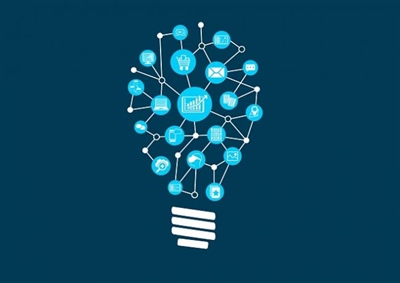Back to the…Mainframe? Not Exactly, but the Cloud Is Changing ISV-GSI Governance into a Blend of Old
We’ve reached the latter stages of the editing process for the Q1 issue of Strategic Alliance Quarterly, coming out soon. As always, we have some great material that didn’t make the cut for the magazine, so we wanted to use this space to pass along some of the insights that emerged from our conversations around the evolving relationship between traditional independent software vendors (ISVs) such as SAP, Oracle, and Microsoft and global system integrators (GSIs) like Capgemini, Deloitte, and Accenture.
In the print version of the article, we talked about the concepts of “rolling adoption” and “continuous innovation.” When companies shift portions of their computing infrastructure from inside their own data centers to a public or private cloud, software is consumed much differently. In the client-server IT model that preceded cloud, ISVs would often take up to two years refining new versions of their applications to make sure they were as bug-free as possible before making them available to the public. The customer would then work with a GSI to customize that new software to their business processes. Now, however, the cloud has enabled software vendors to make updates remotely in an expedient manner. Consequently, new versions come out as rapidly as every six months, and each stakeholder—the ISV, the GSI, and the customer—understands that they will in essence be adjusting solutions on the fly to meet customer needs well after their release.
More Information, Faster, Means More Governance
A couple of the alliance experts we spoke to touched on how this phenomenon is affecting governance models, which are evolving to serve these faster, perpetual sales cycles. For example, teams meet more often and share more information than they did 15 years ago. Lisle Holgate, CSAP, senior director of strategic alliances at Avanade, a joint venture of Microsoft and Accenture, said the core teams of the alliance he works with are meeting weekly, while salespeople convene biweekly and regional leaders gather on a monthly basis to evaluate the dozen or so leads in the pipeline. Global executives get together every quarter, and even the respective CEOs huddle once a year to discuss the alliance at the broadest level.
“We have about 45 or 50 points of exchange across the breadth of the organization on a regular basis, so there’s a more organic understanding of each other,” said Holgate. “Whereas in the old days, [meetings were] about, ‘How many deals did we do? What’s in the pipeline? Okay, ready? Break.’”
To that end, the level of granularity in the information alliance partners are exchanging with each other is unprecedented today. Holgate said that marketing documentation now goes “all the way down to emails about the value proposition. That was unheard of back in the old days.”
Bill Thomas, CA-AM, an industry veteran and current alliance director who has worked in alliance programs at leading enterprise software vendors and global GSIs, has observed a shift toward alliance program governance models specified by software vendors and away from those originated by GSIs as the cloud has taken root. Two decades ago, when GSIs were counted on to significantly customize large-vendor software in on-premise deployments, potential clients calculated cultural, resource, and process fits based heavily on GSI governance models because the GSI's implementation methodologies were foundational to the project’s success.
Now, software vendors see an obligation to prescribe the governance model and deployment methodology as a way to ensure delivery quality, and they’re telling GSIs, “‘This is how our program works,’” said Thomas. “Alliance structure and governance are codified in the agreement [with the software vendor] in order to promote delivery quality and consistency. Also, having a standard, repeatable process ensures fairness in the ecosystem and supports the ability to scale the business to meet the demands of rapid growth.”
What’s Old Is New Again
Steve Blacklock, CA-AM, vice president of global strategic alliances at Citrix, saw parallels between today’s cloud-managed IT model and the old days of the mainframe, the predominant computing model of the 1960s and 1970s, particularly in that “you don’t have to own the whole thing, you can just provision what you want, it’s secure and separated from everything else, and you can pay for what you need,” and he surmised that “the way partnerships, channel, and GSIs behave in [cloud] markets [is] probably analogous to the way things were done before [in the days of the mainframe], too.”
As he said this, Blacklock waved his hands apart and together like an accordion to illustrate how the ISV-GSI relationship has “come together and fractured and come together again” as computing transitioned from the mainframe to the client-server model that took root in the 1990s to this emerging cloud model. He pointed out that in the 1960s, IBM would essentially play the role GSIs play today by supporting the mainframe the customer bought from it and managing the client’s processes, and then speculated on whether the “Big Three” public cloud service providers (CSPs)—Amazon Web Services (AWS), Microsoft Azure, and Google Cloud Platform (GCP)—might fulfill this role in the future, thereby cutting out GSIs.
“They’re not there yet, but I could see a day where [Microsoft] Azure says, ‘If you need to run SAP in Azure, come here, sign this contract, and we’ll provision it for you, we’ll get your networking there, we’ll make sure it’s up and running, we’ll support the software—we’ll give you what you need and you’ll pay for it as you use it.’ Well, how is that any different from what IBM was doing with the mainframe?”
This is just a small slice of what we learned from ASAP members in the trenches of these software vendor–integrator alliances. Be on the lookout for the Q1 edition of ASAP’s flagship magazine Strategic Alliance Quarterly to learn more about the changing dynamics of the ISV-GSI relationship.

